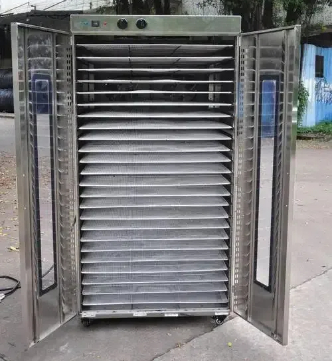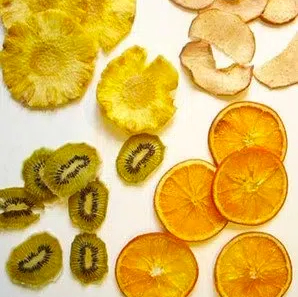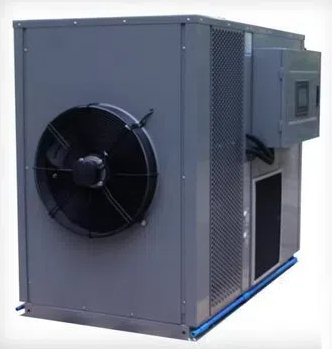
Content Menu
● Introduction
● Understanding Heat Pump Dryers
● Traditional Dryers vs. Heat Pump Dryers
● Benefits of Using Heat Pump Dryers in Food Processing
● Applications of Heat Pump Dryers
● The Process of Drying Food with Heat Pump Technology
● Energy Efficiency and Sustainability
● Future Trends in Food Drying Technology
● Conclusion
● Frequently Asked Questions
>> 1. What is the main advantage of using a heat pump dryer?
>> 2. Can heat pump dryers be used for all types of food?
>> 3. How does the drying time compare between heat pump dryers and traditional dryers?
>> 4. Are heat pump dryers environmentally friendly?
>> 5. What maintenance is required for heat pump dryers?
Introduction
In the world of food processing, drying is a crucial step that helps preserve food, enhance flavors, and extend shelf life. As a manufacturer of food drying machines, understanding the energy consumption of different drying technologies is essential. This article will explore the wattage of heat pump dryers compared to traditional dryers, focusing on their efficiency, benefits, and applications in the food industry.

Understanding Heat Pump Dryers
Heat pump dryers are innovative machines that utilize a heat pump system to dry food products. Unlike traditional dryers that rely on direct heat sources, heat pump dryers transfer heat from the environment to the drying chamber. This method is not only energy-efficient but also allows for precise temperature control, which is vital for preserving the quality of food.
Key Features of Heat Pump Dryers:
1. Energy Efficiency: Heat pump dryers typically consume less energy than traditional dryers, making them a cost-effective choice for food processing.
2. Temperature Control: They can operate at lower temperatures, which helps maintain the nutritional value and flavor of the food.
3. Environmentally Friendly: By using less energy, heat pump dryers contribute to lower carbon emissions.
Traditional Dryers vs. Heat Pump Dryers
Traditional dryers, such as convection and drum dryers, often use high temperatures to evaporate moisture from food. While effective, these methods can lead to nutrient loss and alter the food's flavor. In contrast, heat pump dryers operate at lower temperatures, which helps retain the food's natural qualities.
Wattage Comparison:
1. Traditional Dryers: Typically range from 2000 to 5000 watts, depending on the model and capacity.
2. Heat Pump Dryers: Generally consume between 800 to 3000 watts, making them significantly more energy-efficient.
This difference in wattage not only affects energy costs but also impacts the overall sustainability of food processing operations.

Benefits of Using Heat Pump Dryers in Food Processing
1. Cost Savings: The lower wattage of heat pump dryers translates to reduced electricity bills, making them an attractive option for food manufacturers.
2. Quality Preservation: The ability to dry food at lower temperatures helps preserve vitamins, minerals, and flavors, resulting in higher-quality products.
3. Versatility: Heat pump dryers can be used for a wide range of food products, including fruits, vegetables, meats, and herbs.
4. Reduced Environmental Impact: By consuming less energy, heat pump dryers contribute to a more sustainable food processing industry.
Applications of Heat Pump Dryers
Heat pump dryers are suitable for various applications in the food industry, including:
1. Fruit Drying: Retaining the natural sweetness and flavor of fruits like apples, bananas, and berries. The drying process can enhance the shelf life of these products while maintaining their nutritional value.
2. Vegetable Drying: Preserving the color and nutrients of vegetables such as carrots, peppers, and tomatoes. This method is particularly beneficial for creating dried vegetable snacks or ingredients for soups and stews.
3. Herb Drying: Maintaining the essential oils and flavors of herbs like basil, oregano, and thyme. Dried herbs are a staple in many kitchens and can be used in various culinary applications.
4. Meat Drying: Producing high-quality dried meats while ensuring food safety. This application is popular in the production of jerky and other preserved meat products.
The Process of Drying Food with Heat Pump Technology
The drying process in heat pump dryers involves several stages:
1. Pre-Treatment: Before drying, food products may undergo pre-treatment processes such as blanching or slicing to enhance drying efficiency and quality.
2. Loading: The food is loaded into the drying chamber, where airflow is carefully controlled to ensure even drying.
3. Drying Cycle: The heat pump system circulates air, extracting moisture from the food while maintaining optimal temperature and humidity levels.
4. Cooling: After the drying cycle, the food is cooled to prevent condensation and maintain quality.
5. Packaging: Finally, the dried food is packaged to ensure freshness and prevent moisture reabsorption.
Energy Efficiency and Sustainability
The energy efficiency of heat pump dryers is a significant advantage in today's environmentally conscious market. By consuming less energy, these dryers not only reduce operational costs but also align with sustainability goals. Many food manufacturers are now prioritizing energy-efficient technologies to minimize their carbon footprint and appeal to eco-conscious consumers.
Future Trends in Food Drying Technology
As technology continues to advance, the food drying industry is likely to see several trends:
1. Smart Drying Systems: Integration of IoT technology to monitor and control drying processes remotely, ensuring optimal performance and energy savings.
2. Enhanced Automation: Increased automation in loading, unloading, and monitoring drying cycles to improve efficiency and reduce labor costs.
3. Research and Development: Ongoing research into new materials and methods for drying food, focusing on improving quality and reducing energy consumption.
Conclusion
In conclusion, heat pump dryers offer a superior alternative to traditional drying methods in the food processing industry. Their lower wattage, energy efficiency, and ability to preserve food quality make them an ideal choice for manufacturers looking to enhance their operations. As the demand for high-quality dried food products continues to grow, investing in heat pump dryer technology can provide significant benefits.

Frequently Asked Questions
1. What is the main advantage of using a heat pump dryer?
The main advantage is energy efficiency, as heat pump dryers consume less electricity compared to traditional dryers.
2. Can heat pump dryers be used for all types of food?
Yes, heat pump dryers are versatile and can be used for fruits, vegetables, meats, and herbs.
3. How does the drying time compare between heat pump dryers and traditional dryers?
While heat pump dryers may take longer to dry food, they do so at lower temperatures, preserving quality.
4. Are heat pump dryers environmentally friendly?
Yes, they are more environmentally friendly due to their lower energy consumption and reduced carbon emissions.
5. What maintenance is required for heat pump dryers?
Regular cleaning of filters and checking for any blockages in the system are essential for optimal performance.












